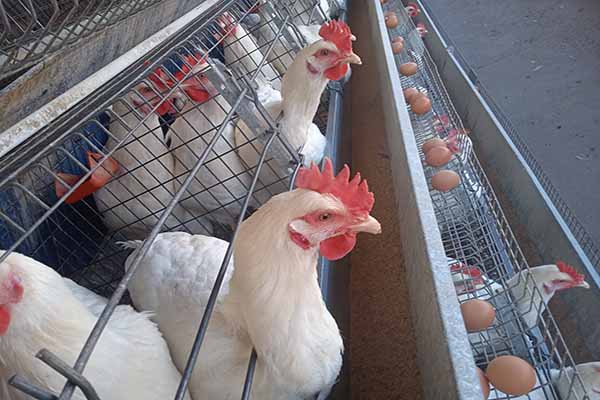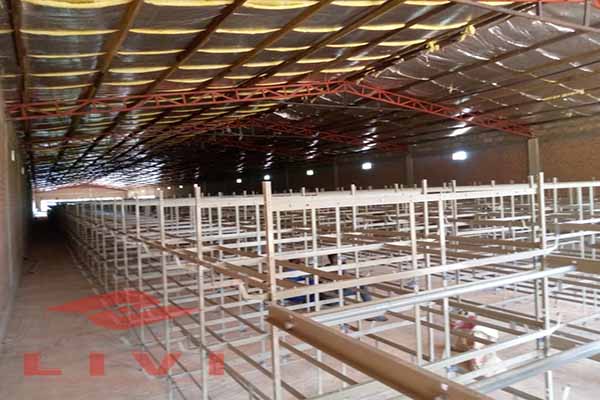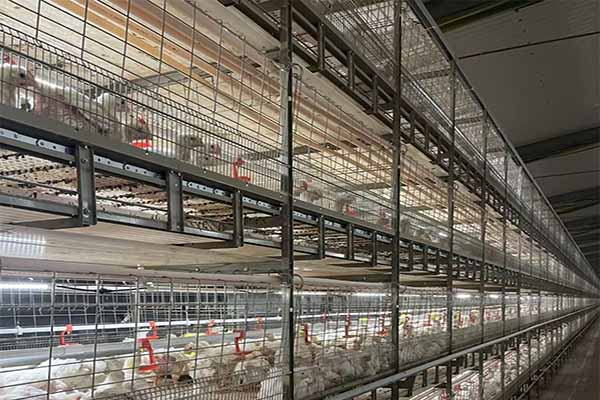Uganda Chicken Farm Automation: Equipment and Labor Cost Comparison
Time : 2025-04-26
As the chicken farming industry in Uganda continues to grow, so does the need for modernization and efficiency. One of the most critical aspects of this growth is the integration of automation equipment into chicken farms. In this article, we’ll dive into the world of automation in Uganda’s chicken farming sector and compare the costs of automation equipment versus traditional labor.

Understanding Automation in Chicken Farming
Automation in chicken farming refers to the use of technology to streamline and optimize various processes. This can include everything from feeding systems to monitoring health and detecting diseases early. In Uganda, where chicken farming is a significant source of income for many, the adoption of automation is becoming increasingly important.
Benefits of Automation
There are several benefits to automating chicken farming operations in Uganda:
- Increased Efficiency: Automation can significantly reduce the time and effort required to manage a chicken farm, allowing farmers to focus on other important tasks.
- Enhanced Animal Welfare: Automated systems can ensure a more consistent and comfortable environment for the chickens, leading to better health and productivity.
- Cost Savings: Over the long term, automation can lead to cost savings by reducing labor requirements and minimizing waste.
Automation Equipment in Uganda’s Chicken Farms
When it comes to automation equipment, there are several options available to Ugandan chicken farmers:

- Feeding Systems: Automated feeding systems can distribute feed at precise intervals, ensuring that the chickens are well-nourished without overfeeding.
- Climate Control: Automation can maintain optimal temperatures and humidity levels in chicken houses, which is crucial for the health and well-being of the birds.
- Monitoring and Data Collection: Sensors and cameras can be used to monitor the chickens’ health and collect valuable data that can be used to make informed decisions.
Cost Comparison: Automation Equipment vs. Labor
Now, let’s talk about the cost comparison between automation equipment and traditional labor. While the initial investment in automation can be quite high, it’s important to consider the long-term benefits and cost savings.
Initial Costs of Automation Equipment
Investing in automation equipment requires a significant upfront cost. Here are some of the key expenses:
- Feeding Systems: Prices can range from a few thousand dollars to tens of thousands, depending on the size and complexity of the system.
- Climate Control Systems: Similar to feeding systems, these can also vary widely in price.
- Monitoring Equipment: Sensors and cameras can be relatively affordable, but more advanced systems can cost several thousand dollars.
Labor Costs
On the other hand, traditional labor costs can accumulate over time. Here’s a breakdown:
- Wage Payments: In Uganda, labor costs can vary depending on the region and experience level of the workers. However, on average, wages for farm workers can range from $50 to $100 per month.
- Training and Supervision: Training new workers and supervising them can also add to the labor costs.
- Overhead Costs: This includes benefits, healthcare, and other expenses associated with employing workers.
Long-Term Cost Savings
While the initial costs of automation may seem daunting, it’s important to consider the long-term savings. Here are a few ways automation can help reduce costs:
- Increased Productivity: Automation can lead to higher productivity, which means more eggs and better overall performance.
- Reduced Waste: Automation systems can help minimize waste, leading to cost savings on feed and resources.
- Reduced Labor Costs: Over time, the savings from reduced labor costs can offset the initial investment in automation equipment.
Conclusion
As the chicken farming industry in Uganda evolves, automation is becoming an increasingly viable option for farmers looking to improve efficiency and reduce costs. While there is an upfront investment required, the long-term benefits can make it a worthwhile investment. By carefully considering the costs and benefits of automation equipment ve rsus traditional labor, chicken farmers can make informed decisions that will lead to a more profitable and sustainable operation.
rsus traditional labor, chicken farmers can make informed decisions that will lead to a more profitable and sustainable operation.
So, if you’re a chicken farmer in Uganda considering automation, it’s worth weighing the initial costs against the potential savings over time. Who knows, you might just find that the benefits of automation outweigh the costs, leading to a brighter future for your farm.











